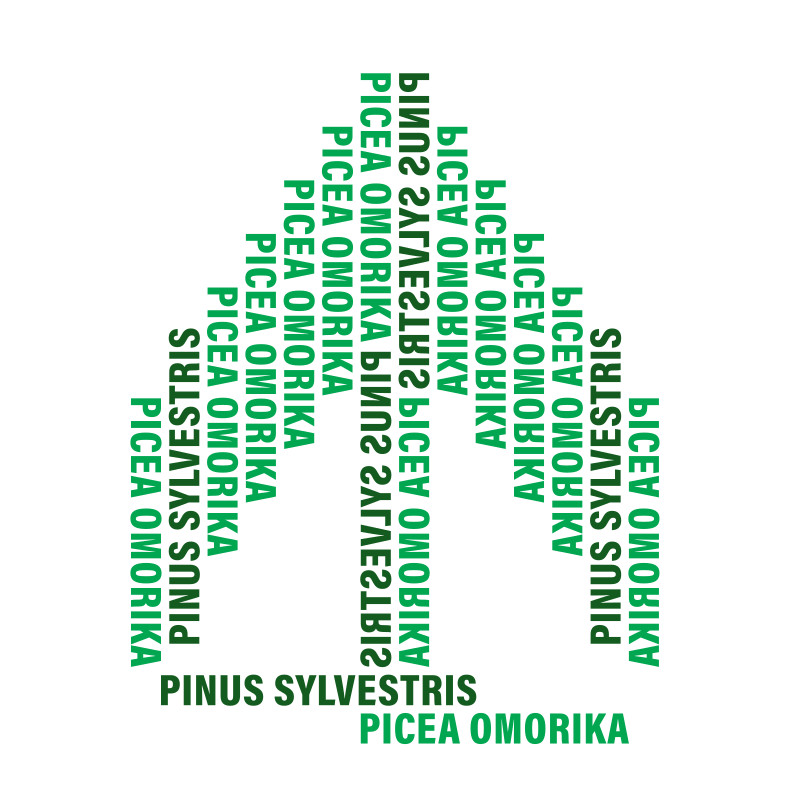Picea omorika (Serbian spruce)
Pinaceae (pine family)
Conifer with very slender crown, reaching 30–40 m in height. When freestanding, foliage grows right from top to bottom. Needles close up with a striking silvery-gray underside. Cones red to dark brown, 3–6 cm long. Dispersal via flying fruit, but mainly by cultivation.
Frequent garden and park tree, because of its narrow crown even small front gardens provide enough space. In Germany characteristic tree of single house settlements, fashionable tree during the 1970s.
Endemic species of the Balkans, whose natural area covers only a very small area on the upper course of the Drina river near the town of Višegrad. First described in 1876 as a separate species; meanwhile widespread thanks to horticulture in Central Europe.
Pinus sylvestris (Scots pine)
Pinaceae (pine family)
Conifer with mostly irregular, overhanging crown, reaching up to 40 m height. Needles in twos, up to 7 cm long; conical cones, seeds winged. Seed dispersal by wind, water and humans.
Frequently planted, one of the most important forest trees. In addition to the use of for timber (construction, furniture and firewood) extraction of pine needle oil, formerly also resin extraction.
Indigenous to Central Europe for about 13,000 years, immigrated towards the end of the last ice age. Natural area covers wide areas of northern Eurasia from Western Europe to eastern Russia.
